I tend to mix a large batch of gluten free whole grain flours vs simple white rice or brown rice blends. If you’re diabetic, this can help lower the glycemic index. Each flour will give different textures and flavors.
Author: Laura @ Petite Allergy Treats
Gluten Free Whole Grain White Flour Hybrid
Makes about 4 1/2 cups
- 2 cups brown rice flour
- 1 cup white rice flour
- 1/2 cup teff flour
- 1/2 cup tapioca starch
- 1/2 cup potato starch
Whole Grain Gluten Free Flour Mix
Makes 4 1/2 Cups
- 1 1/2 cups teff flour
- 1 1/2 cups millet flour
- 3/4 cup tapioca starch
- 3/4 cup potato starch
- 2 cups brown rice flour
- 1 cups white rice flour
- 3/4 cup potato starch
- 3/4 cup tapioca starch
Mix well in a large bowl. Store container in refrigerator or freezer to help preserve nutrients. Teff and millet flours are perishable. You should always refrigerate or freeze unused flours even if it’s not mixed. I’ve read it can go rancid fast, although I’ve had my mixed bags in the refrigerator for several weeks with no problems.
You’ll notice I don’t add xanthan or guar gum. This way it can truly be all purpose. You’ll probably need to add some eventually, depending upon its use.
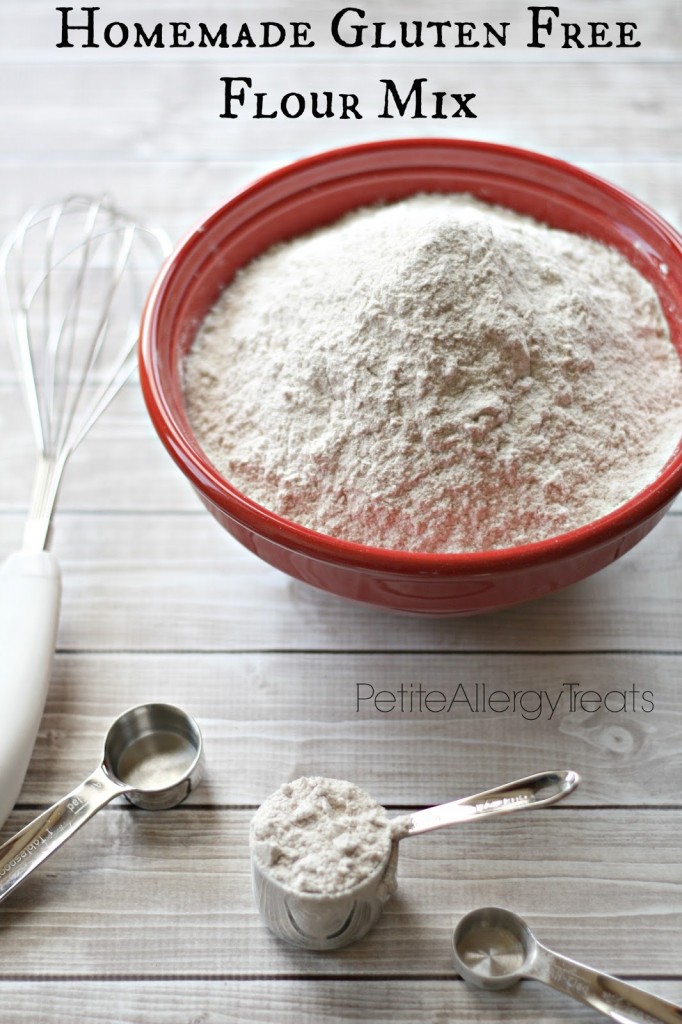
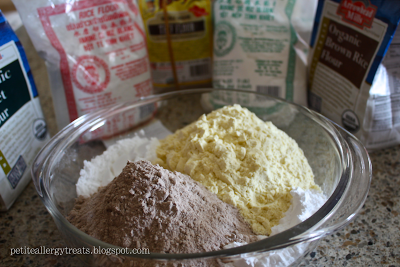





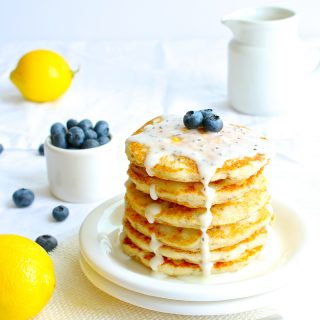
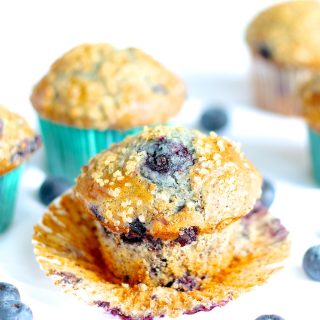

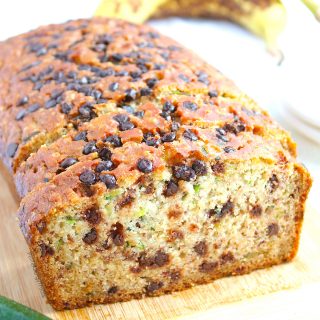
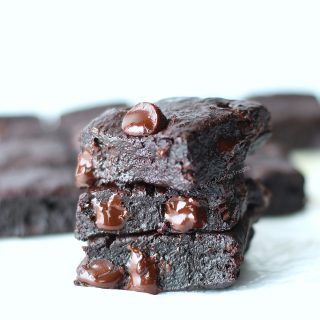
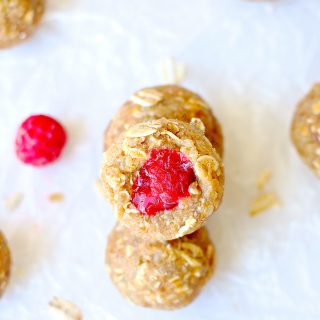
I love that you’re using rice flour from an Asian grocery. There are so many gluten free sites that go on about “inferior quality” Asian flours and it really irritates me. Being part Korean, I’ve always picked up gluten free flours along with my “weird” ingredients like dried anchovy or cuttlefish. It’s great to see a site where non-American goods doesn’t mean poor quality. I can’t wait to give your recipes a try.
THank so much Melissa! I really don’t understand where this negative feedback of ‘inferior’ quality started with gluten free rice flour or potato starches… I have never had a problem baking with them. Each bag cost only a whooping 99cents at most; I couldn’t justify paying 6 times that for the same quality.
I so agree!! Asian stores saved my life, concerning a very tight budget and a kid with coeliaks. Love my toko!
I started out there for the flours,but being an avid cook (indonesian and sushi are favorits here) I rummaged the store and found so much more goodies! Not to mention cheap, but high quality shrimp, crab, fish, dim sum in the freezer there.
That is because close mind people never look beyond their nose. I was in the military and being exposed to different cultures was a wonderful experience. The Asian store gluten free grains work wonderful.
My goal is to find a gluten free flour I can use as a thickening agent, breading, baked goods….does this work for all of that? Are any allowance necessary?
One problem I’ve had with rice flour baked goods is the texture changes quite significantly in your mouth. From normal bread to slime….I can’t do that anymore.
Any ideas there?
I have used these for thickening without any problems… The whole grain appears more brown. I haven’t really breaded much but this worked well for part of my vegan zucchini sticks. I switch between all of these blends for baking various treats. The white basic blend is best for breads since the starch ratio is higher but I find the hybrid and whole grain is better for treats (less gummy since it contains less starch).
I’m not entirely sure I understand the slimy texture but the standard off the shelve mixes are not my favorite for baking, way too much starch and only plain rice flour.
As a gluten-free thickener, I use mashed cannellini beans. I have heard people use them powdered, but I just put a batch through the food processor just after degassing and divvy it into ice cube trays. I always have some in the freezer to add to soups and the like. Cannellinis are white, so do not discolor dishes, but they are essentially a kidney bean. It is my understanding that you can use any kidney bean as a thickener.
why do you say it is ‘whole grain” when you use refined starches?
Rachel, Virtually all gluten free flours use starches like potato and tapioca to help bind and create the correct texture when liquid is added (very important especially when egg cannot be used). The term whole grain refers to the use of teff flour and millet flours, which are more wholesome than a plain rice flour.
Hi Laura! I’m avoiding nightshades in my diet and have been looking for an all purpose flour blend that doesn’t include potato starch. Is there a substitute for potato starch I could use for your recipe? Your bread recipes look delicious!
Hi Emily, thank you so much! I find that tapioca and potato are pretty similar. Potato starch is a little drier in texture, less gummy. You could always add extra tapioca (slightly less than double) in place of potato starch for my mixes since I think tapioca makes the texture a little gummier than potato starch. I have not experimented yet, but arrow root might work for you, (not sure if this is a nightshade). If you’re looking for an off the shelf mix the company Domata (blue box) makes a potato free all purpose mix AND a really cool new mix from Enjoy Life Foods just came out. This might be perfect for you (it’s potato free). Here’s the link: http://enjoylifefoods.com/our-foods/baking-mixes/
I am also nightshade intolerant and struggle to find products and recipes that do not include potato (or the tomatoes and peppers in so many yummy looking recipes). I have found that the Namaste brand is potato free. Whole Foods carries it and it can be found online as well. Hope this helps. Otherwise I am also looking for ways to make my own mixes to save money and have heard Tapioca or Arrowroot are good substitutes. In SMALL quantities you can even use cornstarch.
Looking forward to trying some of these recipes!
I have baked and made pasta with the enjoy life blend. It is amazing.
Very cool! I’ll have to try homemade pasta some time soon.
Costco carries the Namaste
Hi! Can I replace any of your “starches” with cornstarch? Instead of tapioca, for example… I live in Argeninta and it´s very hard to get a hold of these ingredients at a reasonable price… Thanks!
Jose, this is a tough question. Cornstarch often does not act the same as tapioca/potato starch when baking. I fear it will change things too much and not give you the best results. I realize these can be expensive though. You could also look for the whole Tapioca beads (usually Asian or India grocery stores carry these) and grind them into powder/flour yourself. Sorry, and hope that helps a bit!
It does help, thanks you! I think I have an Asian store nearby, I’ll go look around as soon as I get the chance, see what I can do 😀
Good to hear! I buy my white rice flours there as well, for less than $1 American dollar a bag. If you’re going you, might as well look for gluten free rice noodles and sweet potato vermicelli.
I’m new to this…is tapioca and potato starch the same as tapioca and potato flour? I’ve seen both in different recipes & wondering if they’re interchangeable
It can be a bit confusing, can’t it? Tapioca starch and flour are virtually the same. Some argue where the source of the starch extracted changes the name of flour vs starch. The names are interchangeable for the same results…
Potato is much different. Potato starch only contains, well, the starch from the potato itself. Potato flour contains BOTH starch and potato fibers. Mistakenly using potato flour will result in a very heavy and dense product since potatoes absorb so much moisture. Potato starch is denser than tapioca starch but both are useful in gluten free baking… Tapioca starch is sticky and can lead to a gummy texture if too much is used, often this is the reason why potato starch is then added (helps bind but not turn gummy). Hope that helps a little!
Hi, have you tried without potato starch or tapioca? I can’t eat grains with potato, and I am looking for a great bread recipe.
Hi Andreina, I have not tried without potato starch & tapioca. I find both those starches work well together and thankfully potato is one food we can tolerate. I know the brand Domata makes a white gluten free flour mix free of potato (not sure about tapioca). I think the flour would work for most of my recipes but I’m not positive. Hope that helps a little!
Hi there, thanks so much for your hamburger bun recipe! They were a hit with my family! Just wondering if you have ever doubled this recipe? Thanks!
Thank you Sandy! Yes, doubling a mix works, the only tricky thing can be if you are hand mixing. The double batch would not be ideal without a stand mixer since there will be so much batter to work with to evenly blend.
Can you recommend something to sub in for the teff flour? I have a severe egg allergy, and my understanding is that the protein in teff is very similarly shaped (molecularly speaking) to the egg protein, so I’ve been scared off of it. I believe I had a reaction to it back before my GF days, though it’s hard to say, but I haven’t been willing to chance it again.
Hi Grace,
I have not heard of Teff being structurally similar to egg protein, very interesting. We manage an egg allergy and haven’t had a problem… but I don’t blame you for trying to avoid Teff. Feel free to substitute another whole grain gluten free flour such as Sorghum, Buckwheat or more Millet/ Brown Rice.
Hi Laura! Can you tell me what flour brands you use? My daughter is allergic to wheat, eggs, milk, all nuts, sesame, and seafood.. Yikes!! We need allergy friendly flours in our house as you can see.. Please help, and thanks!!
Hi Emily, Please keep in mind what may be safe for my family, could be different for yours. I buy my rice flour at out local asian store. The brand is Three Ladies for white rice flour. I use the ground tapioca starch by Trang. The brown rice flour is from Bob’s Red Mill and the potato starch is from Swan. Hope that helps!
Thank you for the help Laura! 🙂
Thank you for this recipe! It is very difficult to find a vegan AND gluten free bread. I used my own mix which is equal parts of Brown Rice, White Rice, Tapioca, Potato and Corn. That blend works fabulous for so many things, however, I will try your blend next time. Mine are a bit flat with my flour mix. I also used the active dry rather than fast rising yeast. I don’t know if that affected it. Even with the imperfections, I am excited to have these.
I don’t understand: you have three different recipes here apparently. If that’s the case, which would you recommend for what kinds of different applications (recipe types)?
Please provide some additional guidance. Thanks!
Hi Mark- You are correct, there are three different flour recipes here. The ‘whole grain’ contains more nutrients but my readers had difficulty finding teff flour (plus it’s expensive). Most recipes out there call for an all-purpose mix so then I created the ‘basic white flour’ blend. But. Then I wanted more nutrition for the kids so I created yet another ‘hybrid blend flour’ which is a combination of the white and whole grain flours. Buuut, again readers didn’t have those flours. Hence most of my recipes utilize the all purpose basic white blend. 😀
Hi Laura,
Thank you so much for all of the wonderful recipes!
I have RSD and it’s a recommendation to cut gluten from my diet to decrease inflammation. It has made quite a difference.
I was wondering if you ever use Coconut flour in your recipes? I’ve been using that and Coconut sugar when necessary. I prefer maple syrup though.
Just curious!
Thanks again!! Take care.